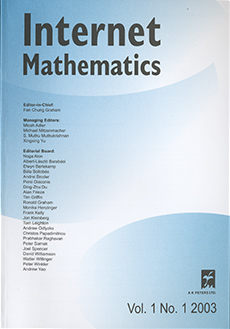Abstract
Let $G = \mathcal{G}(n,r)$ be a random geometric graph resulting from placing $n$ nodes uniformly at random in the unit square (or the unit disk) and connecting every two nodes if and only if their Euclidean distance is at most $r$. Let $r_\mathrm{con} = \sqrt{\frac{\log n}{\pi n}}(1+o(1))$ be the known critical radius for connectivity when $n \to \infty$. The restricted Delaunay graph RDG$(G)$ is a subgraph of $G$ with the following properties: it is a planar graph and a spanner of $G$, and in particular it contains all the short edges of the Delaunay triangulation of $G$. While in general graphs, the construction of RDG$(G)$ requires $\Theta(n)$ messages, we show that when $r = O(r_\mathrm{con})$ and $G=\mathcal{G}(n,r)$, then with high probability, RDG$(G)$ can be constructed locally in one round of communication with $O(\sqrt{n \log n})$ messages, and with only one-hop neighborhood information. This size of $r$ proves that the existence of long Delaunay edges (an order larger than $r_\mathrm{con}$) in the unit square (disk) does not significantly affect the efficiency with which good routing graphs can be maintained.
Citation
Chen Avin. "Fast and Efficient Restricted Delaunay Triangulation in Random Geometric Graphs." Internet Math. 5 (3) 195 - 210, 2008.
Information




